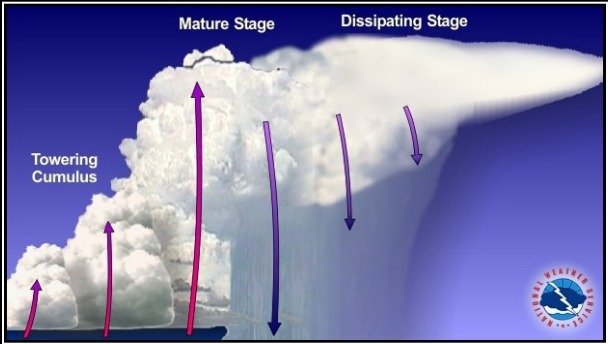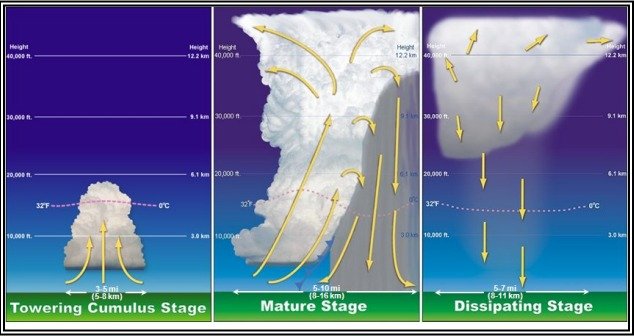The Basics of Thunderstorms
Ingredients to Form a Thunderstorm
Sufficient Water Vapor - Can be measured through dewpoint
Unstable Air - Warm, moist air underneath cold, dry air
Lifting Action - Converging winds around surface lows and
troughs, fronts, upslope flow, drylines, outflow boundaries generated by prior storms, and
local winds, such as sea breeze, lake breeze, land breeze, and valley breeze circulations
Types of Thunderstorms
Single Cell
Multi Cell (almost all thunderstorms are Multi Cell)
Super Cell
Each type of thunderstorm should be taken seriously, regardless of size or number of cells.
Phases of a Thunderstorm
Towering Cumulus - Strong convective updrafts
Mature - Precipitation reaches the surface
Dissipating - Strong downdrafts
Hazards
Lightning
Adverse Wind
Downburst
Turbulence
Icing
Hail
Rapid Altimeter Changes
Static Electricity
Tornado
For more information visit the FAA Weather Advisory Circular AC 00-6B!




